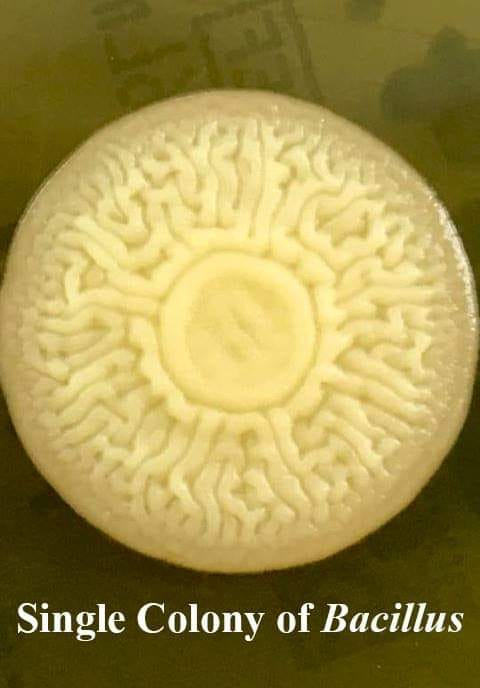Edge of colony shows irregular comma-shaped outgrowths on blood agar (also referred to as Medusa head).
Virulence factors
- Antiphagocytic capsule
- B. anthracis is the only bacterium that is capable of forming a polypeptide capsule
- Most bacterial capsules are polysaccharides (long chains of sugar molecules).
- The PGA capsule of B. anthracis has the distinct functional advantages of being highly resistant to host proteases due to its D-amino acid/γ-linkage structure and being inherently poorly immunogenic, making it an exceptionally effective shield against both innate and adaptive immunity.
- Contains poly-D-glutamate
- The capsule protects the bacterium from lysis following phagocytosis. B. anthracis is not infectious if not encapsulated.
- B. anthracis is the only bacterium that is capable of forming a polypeptide capsule
- Anthrax toxin: responsible for the local and systemic manifestations of anthrax; made up of A and B subunits
- The A subunit has 2 components:
- EF (edema factor): binds to calcium and calmodulin and gains adenylate cyclase activity → ↑ cAMP → cell edema
- LF (lethal factor): a metalloprotease that destroys MAPKK (mitogen-activated protein kinase kinase ) → cell death
- The B subunit (PA; anthrax toxin protective antigen) binds to endothelial receptors and facilitates entry of the A subunit into the host cell.
- The A subunit has 2 components: